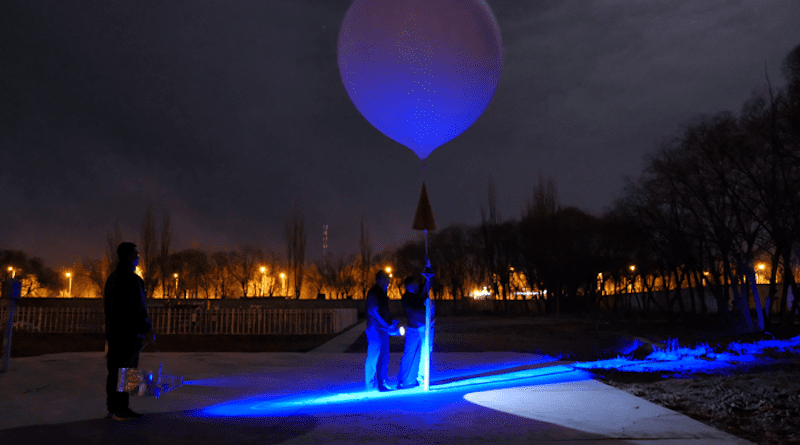Study Reveals Presence Of Hunga Tonga Eruption Aerosols In Northern Hemisphere Stratospheric Westerlies
An international team led by researchers from the Institute of Atmospheric Physics (IAP) of the Chinese Academy of Sciences has detected aerosols from the Hunga Tonga eruption in the Northern Hemisphere stratospheric westerlies for the first time.
This discovery, published in Science Bulletin, will aid in simulating the physical and chemical processes in volcanic plumes.
The Hunga Tonga-Hunga Ha’apai volcano, located in the South Pacific Ocean, erupted in January 2022, spewing ash and gas into the atmosphere. The eruption was one of the largest in recent years and was closely monitored by scientists worldwide.
The purpose of the Sounding Water vapor, Ozone, and Particle (SWOP) campaign is to better understand the temporal and spatial distribution characteristics of atmospheric compositions over the Tibetan Plateau. Capturing the volcanic aerosols from the Hunga Tonga eruption was unexpected, according to Prof. Jianchun Bian, an IAP scientist and a team leader of the SWOP campaign.
“We happen to have captured the volcanic aerosols from the Hunga Tonga eruption 12 weeks after it erupted. To my knowledge, this is the first time that it’s been detected at the stratospheric westerlies in the Northern Hemisphere,” said Prof. Bian.
Large uncertainties still remain in understanding physical properties and evolutionary process of volcanic aerosols in the stratosphere, particularly SO2 oxidation in volcanic plumes and clouds and the interaction between ash and sulfate aerosols after volcanic eruptions. In-situ measurements obtained in volcanic plumes, especially measurements of the microphysical parameters of volcanic aerosols, provide compelling evidence that reduces these uncertainties. However, it is difficult to obtain these parameters, especially during the occurrence of volcanic eruptions.
During the SWOP campaign carried out over the Tibetan Plateau, a balloon-borne payload consisting of the Compact Optical Backscatter Aerosol Detector (COBALD) and the Portable Optical Particle Spectrometer (POPS) was released in Lijiang, Yunan province on April 9, 2022. Unexpectedly, the balloon captured the size spectrum of volcanic aerosols at 24–25 km.

